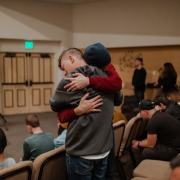What’s the Difference Between Basic VS Full Service Cremation
If you have never planned a funeral service before, you may not be aware that there are different types of disposal methods. Most families are used to traditional burials because those were popular back in the day. But now, cremations are gaining popularity for many reasons from affordability to environmental sustainability.
However, most people think that cremations are all the same. If you’ve never planned a funeral before or are only used to traditional burial, it’s understandable why you’d think that way. In reality, there are various types of cremation services. Bear in mind that various end-of-life service options are available to you and your family based on your needs, preferences, and budget. Hence, doing research is key to setting up a service that you feel happy with.
As a family member planning for a loved one’s funeral, figuring out these services allows you to make an educated choice that you won’t regret. When it comes to cremation services, you can choose between basic or full-service cremations. Learn more about their similarities and difference below so you can pick one that satisfies the last wishes of the deceased or the needs of your family:
Similarities Between Basic and Full Cremation Services
The cremation process is actually the same for both, whether basic or full cremation. It means the body will be prepared and tagged before it enters the crematory chamber. The body will spend the same amount of time in the chamber until it is finally reduced to cremation remains or ashes. Whether basic or full cremation services, family members will wait the same amount of time.
Once the body is turned into ashes, there’s a cooling period so the crematory team can safely handle the remains without getting burned. It will then be sifted for hard particles and other big sediments before it is placed in a temporary urn to be given to the family. Whether basic or full cremation, the ashes will be returned to the family. Now, let’s discuss the differences.
Full-Service Cremation
A full service lives up to its name because the body receives a full service before entering the crematory chamber. This means cremation may be delayed until a viewing or other funeral programs are completed. Some individuals prefer to have a visitation with an open casket so there could be embalming involved to preserve the body for a period of time. The casket could be displayed in a viewing area and eulogies or other religious services may be conducted.
In a full-service cremation, the body is not transported to the graveside when all the funeral services are done. There will be no grave or burial plot. Instead, the body is transported to the crematory service provider after all the rituals are concluded. Some people refer to this as traditional cremation services because the body of the deceased is present and all the ceremonial proceedings of a classic funeral are conducted.
Basic Cremation
Basic cremation is also known as direct cremation. It is one of the most simple cremation services that a family can opt for the deceased. Because of its simplicity, it is also the most pocket-friendly. With this service, the body is transported directly to the crematory facilities. The family says goodbye and pays their last respects at the site where the deceased died. There is no visitation, embalming, or fancy casket involved.
For some family members, they opt to plan for a memorial service once the cremation is complete and the ashes are inside an urn. Since the body is no longer present, the family members have more flexibility when it comes to when or where to hold the service. Some opt to have this in a church, religious building, home, park, or another venue.
The family has many options when it comes to making memorial arrangements after the direct cremations because things don’t have to be scheduled within a specific day after the death. Because there’s no deceased body to worry about, you can work at the most convenient time for your loved ones and out-of-town guests.
Cremation on a Budget
If you are under a tight budget, direct cremation is very affordable. It is also an honorable final disposition method that enables the deceased to transcend the ephemeral world without worries. It is a respectable method that honors the memory of the deceased while supporting the loved ones left behind.
Traditional funeral services cost tens of thousands of dollars. Usually, when someone dies, most family members have not planned for it and they are strapped for cash. The financial burden falls on the next of kin with embalming, casket, flowers, and other expenses that prepare the body for viewing. All these costly details can add up, especially for family members who may have medical bills to pay or who have to face the reality that they’ve lost a breadwinner.
A basic cremation is an affordable option that allows you to lay your deceased loved one to rest without having to incur too many expenses. Speak to a funeral and cremation services provider in your area to ask for quotes. Most reputable funeral directors are willing to work with you to meet your budget constraints without compromising the sanctity or quality of care of the death care services.








